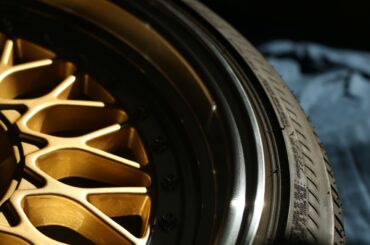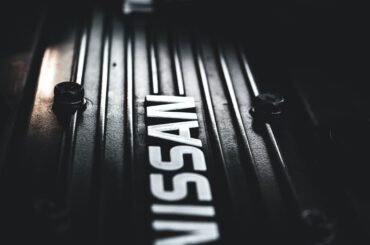Contents
- 1 Can a Serpentine Belt Stretch? – Introduction
- 1.1 Understanding Serpentine Belts: The Heart of Accessory Power
- 1.2 Can a Serpentine Belt Stretch?
- 1.3 Causes of Serpentine Belt Stretch: The Culprits Behind Elongation
- 1.4 Signs of Serpentine Belt Stretch: Identifying the Telltale Clues
- 1.5 Maintenance and Replacement: The Path to Serpentine Belt Longevity
- 2 Conclusion: Preserving Serpentine Belts Through Care and Attention
Can a Serpentine Belt Stretch? – Introduction
In the intricate dance of automotive engineering, the serpentine belt plays a starring role, gracefully transferring power from the engine to various components like the alternator, air conditioning compressor, water pump, and power steering pump. However, like any critical component, serpentine belts are not impervious to the effects of time and wear. Vehicle owners often find themselves pondering, “Can a serpentine belt stretch?” In this article, we’ll delve into the concept of serpentine belt stretch, explore the causes behind it, and provide insights into proper maintenance and replacement practices for this vital automotive component.

Understanding Serpentine Belts: The Heart of Accessory Power
Serpentine belts are engineered from durable rubber compounds infused with embedded fiber cords to impart strength. These belts are precision-designed to fit snugly around the pulleys of an engine, effectively transferring rotational power to drive the various accessories. When in prime condition, serpentine belts should maintain their tautness, ensuring efficient operation of the components they power.
Can a Serpentine Belt Stretch?
Serpentine belts, as a rule, are not designed to stretch significantly under normal operating conditions. However, they can experience minor elongation over time due to wear and the influences of heat, moisture, and tension. This subtle elongation, often referred to as “belt stretch,” can result in the belt losing tension and slipping on the pulleys, ultimately leading to issues such as squeaking, reduced power transmission, and even potential damage to the driven components.
Causes of Serpentine Belt Stretch: The Culprits Behind Elongation
- Wear and Tear: Over the course of time, the rubber material in serpentine belts can degrade due to prolonged exposure to heat and moisture. As the rubber weakens, the belt may undergo minor stretching.
- Tension Loss: A pivotal component in the serpentine belt system is the tensioner pulley. This component is responsible for maintaining the correct tension in the serpentine belt. If the tensioner weakens or malfunctions, the belt may lose tension and exhibit stretching.
- Overloading: Exposing the serpentine belt to excessive strain, such as using it to drive additional accessories that were not part of the original design, can lead to stretching and resultant damage.
- High Temperatures: Prolonged exposure to elevated engine temperatures can accelerate the breakdown of the belt material, potentially causing minor stretching.
Signs of Serpentine Belt Stretch: Identifying the Telltale Clues
- Squeaking or Chirping Noises: A stretched serpentine belt may begin to slip on the pulleys, creating noticeable squeaking or chirping sounds. These sounds are especially evident during engine startup or when utilizing accessories such as the air conditioning system.
- Reduced Accessory Performance: As the serpentine belt loses tension and stretches, it may not efficiently transfer power to engine accessories. This can lead to diminished performance of key components like the alternator, power steering, and air conditioning.
- Visible Wear: Physically inspecting the serpentine belt is a useful practice. Signs of stretching, such as visible wear, cracking, or damage, are indicators that a replacement is in order.
Maintenance and Replacement: The Path to Serpentine Belt Longevity
Proper maintenance and the timely replacement of the serpentine belt are essential for preventing issues associated with stretching. Here are some maintenance tips to keep in mind:
- Regular Inspection: Implement a routine schedule for inspecting the serpentine belt. Look for any visible signs of wear, cracking, or stretching. If any of these issues become apparent, it’s crucial to replace the belt promptly.
- Tension Adjustment: Ensure that the belt’s tension is correctly adjusted. The tensioner pulley plays a pivotal role in this adjustment, and it should be regularly inspected. If the tensioner is faulty or worn, it should be replaced to maintain proper belt tension.
- High-Quality Replacement: When the time comes to replace a serpentine belt, it’s wise to choose a high-quality, automotive-grade belt that aligns with the specifications of your vehicle. This ensures that the new belt will be durable and offer reliable performance.
Serpentine Belt Renewal: https://m.youtube.com/watch?v=RBObweG5GkE&pp=ygUeQ2FuIGEgU2VycGVudGluZSBCZWx0IFN0cmV0Y2g_

Conclusion: Preserving Serpentine Belts Through Care and Attention
The question of whether serpentine belts can stretch is answered with a nuanced understanding. While serpentine belts can indeed experience minor stretching over time due to wear and environmental factors, it is not typically a major issue in most cases. However, recognizing the signs of stretching and wear and acting accordingly is vital for the proper maintenance of your vehicle’s serpentine belt.
Through regular inspection, correct tension adjustment, and the installation of high-quality replacement belts when necessary, you can ensure that your vehicle’s serpentine belt continues to function efficiently, transmitting power to essential engine accessories. By addressing these aspects of maintenance, you can prevent issues related to belt stretching and maintain the reliability and performance of your vehicle’s vital systems.
In conclusion, the question of whether serpentine belts can stretch is an important one for vehicle owners and enthusiasts. While serpentine belts can experience minor stretching over time due to wear and various environmental factors, this phenomenon is not typically a major concern. It is, however, essential for vehicle owners to be aware of the signs of belt stretching and take appropriate maintenance measures.
Proper maintenance includes regular inspections to identify wear and stretching, ensuring the correct tension adjustment, and, when needed, the installation of high-quality replacement belts that adhere to the vehicle’s specifications. By following these maintenance practices, vehicle owners can effectively preserve the integrity and functionality of their serpentine belts, thus guaranteeing the smooth and efficient operation of their engine’s critical accessories. Addressing potential stretching issues is an essential aspect of vehicle maintenance that can contribute to the overall longevity and performance of the vehicle’s drive system.
More Links:
Unveiling the Truth: Are CVT Transmissions Reliable in 2023? : https://motorpet.com/are-cvt-transmissions-reliable-in-2023/
The Definitive Guide: Should I use a torque wrench to tighten my oil drain plug? (2023): https://motorpet.com/should-i-use-a-torque-wrench-to-tighten-my-oil-drain-plug/
Troubleshoot Your car won’t start just clicks once but lights work (2023) : https://motorpet.com/car-wont-start-just-clicks-once-but-lights-work-2023/






